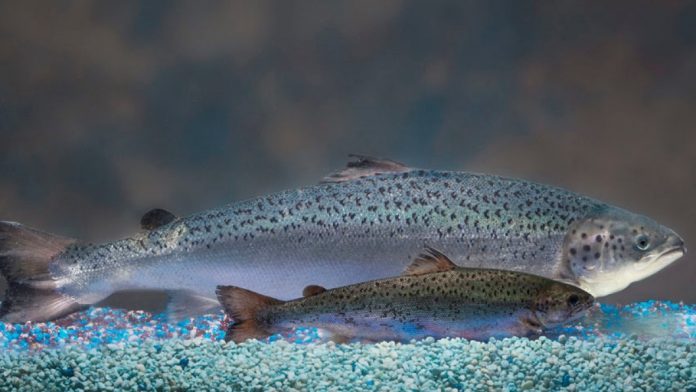AquaBounty spent a lot last year though has incurred significant losses since its inception in 1991.
In a filing AquaBounty Technologies, which is aiming to harvest its fast-growing genetically engineered salmon by Q4 2019, posted its results for the year ended December 31, 2019.
The GM salmon farmers posted a net loss for the year which increased by 26.9 per cent, to USD 13.2 million from USD 10.4 million in 2018. This was down to the “ramp-up of production operations in Indiana and Rollo Bay, increased legal fees in support of the FDA legal challenge, and increased headcount,” it wrote.
The biotech company completed two public offerings of common shares, raising net funds of USD 12.4 million. Its Canadian subsidiary received two construction loan instalments totalling CAD 900 thousand from the Department of Economic Development of the Province of Prince Edward Island and the Atlantic Canada Opportunities Agency.
The company has incurred significant losses since its inception in 1991 and expects to until it achieves “market acceptance for our product and expand our production capacity”.
AquaBounty Chief Executive Officer Sylvia Wulf said: “This was a transformative year for AquaBounty, as for the first time in the Company’s history we began to grow-out our AquAdvantage Salmon in the United States. Production of both AquAdvantage and conventional salmon at our Indiana farm is progressing on track with conventional salmon harvest commencing in late Q2 this year and AquAdvantage Salmon harvest commencing in Q4.

“We also took steps during 2019 to strengthen our balance sheet with two successful equity raises and to strengthen our management team with the additions of Dave Melbourne as Chief Commercial Officer and Angela Olsen as General Counsel. We believe we are now well-positioned to begin to execute our commercial strategy with the harvest and sale of our salmon from both our Indiana and Rollo Bay farms.”
Looking ahead, it wrote that near term, the company wants to construct and operate four to five new, land-based RAS farms in North America at locations “close to consumer consumption”. Each of these farms could cost USD 75 million to USD 100 million to construct.
“We also are seeking regulatory approval for AquAdvantage Salmon in Brazil, Argentina, Israel, and China. Once approved in these locations, we plan to commercialize through a combination of partnerships, joint ventures, and licensing arrangements,” it added.
The company wrote it expects more “significant revenues in 2020”. It added that its target is to achieve an annual production output of at least 50,000 metric tonnes in seven years.
In February, SalmonBusiness reported that media tycoon, hedge fund manager and former Scottish Salmon Company director Yuriy Lopatynskyy bought shares in AquaBounty via the investment company LLF Financial (LLFF).

